Porsche 911 Carrera RS: Non-In-Depth Drive
I drove 70 cars in 2023, but choosing the ‘best’ of those was never a question.
When the 911 debuted in 1963, it had narrow fenders, 15” steel wheels, and just 130 horsepower from 2.0 liters. We all know what happened next: that original package was widened, stretched, sculpted, and infused with technology, displacement, and comforts for the next three decades.
By 1996, it was finally dragged into its ultimate naturally-aspirated form, to become this: the 1996 911 Carrera RS. It’s the lightest 993-generation car ever made, and at its heart lies the most powerful NA air-cooled motor ever to leave the factory.
The Carrera RS can be thought of as predecessor to today’s GT3, and just like the original GT3, it was built as a true homologation special. Despite the low production volume of 1,014 cars, the RS received a unique 3.8-liter motor, heavily upgraded from the standard Carrera’s 3.6 liter unit.
Porsche fettled with just about every component to make a more engaging, sharper, and lighter sports car. As documented on Stuttcars:
It features a naturally aspirated 3.8-liter engine generating a maximum power output of 300 PS (221 kW; 296 hp) achieved by the use of lightweight forged pistons, dual oil coolers, big intake valves, Varioram variable-length intake manifold, a modified Bosch Motronic engine management system, and lightened rocker arms.
The six-speed G50/31 manual gearbox with a short shifter used on the Carrera RS had modified gear ratios for the first three gears.
The larger 322 mm cross drilled and ventilated discs brakes front and aft with four piston calipers were shared with the 911 Turbo and limited-slip differential was included as standard equipment.
The exterior is easily distinguishable from a normal Carrera by a large fixed rear wing, small front flaps, and three-piece 18-inch (457 mm) aluminum wheels. The headlight washers were deleted for weightsaving reasons. A seam-welded body shell with an aluminum bonnet supported with a single strut was used along with thinner glass.
On the interior, the rear seats were removed, and special racing seats along with spartan door cards were installed. Sound proofing was also reduced to a minimum. The suspension system used Bilstein dampers and the ride height was lowered for improved handling. Adjustable front and rear antiroll bars and an under-bonnet strut brace further increased handling. The final weight of the car was 1,280 kg (2,822 lb).
That’s all a very dry way of saying that this is possibly the most driver-focused air-cooled Porsche ever built.
I hastily typed out some observations during my time with the car. I jotted down the word “seats,” three separate times. They’re just spectacular — narrow, firm, and bolted low to the floorboard. Unlike the modern GT buckets Porsche offers today, they’re in a car with a low beltline and supreme visibility, giving you a sense of awareness and confidence that instantly puts you at ease on the road.
Another note reads: “I think I heard wind turbulence coming off the rear wing?”
When you approach the Carrera RS, you’re bombarded with lightweight details and weight-saving measures. You can read them on the spec sheet, but when you see them up close, they have more consequence. I don’t notice thinner glass because I can’t see it, but I notice the round manual door lock mechanisms borrowed from the 911SC, attached to spartan, black door cards.
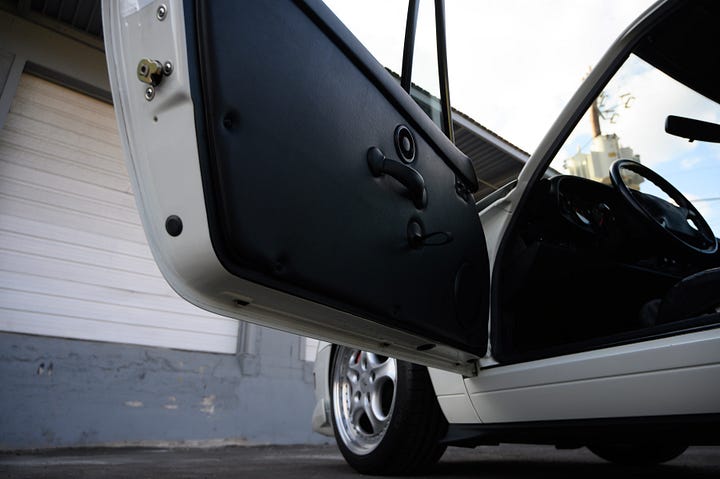
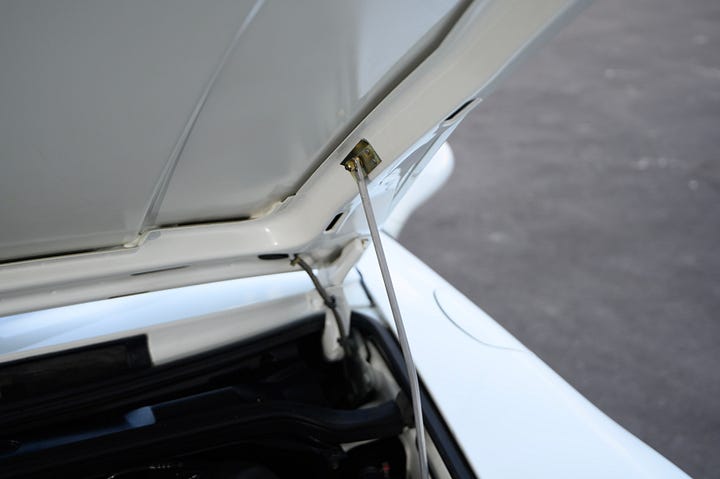
The lightweight aluminum front trunk cover (a gentleman never uses the word “frunk”!) is held up with a single prop rod instead of struts. And the doors themselves are also aluminum, and close with an immensely satisfying sound.
With a car like this, there’s always a nagging fear: what if the upgrades are too nuanced for me to feel? What if all this lightweight stuff is theater — a “driving purity” placebo? What if it’s impossible for me to notice the changes on regular roads?
I find that modern performance & track cars developed to shine at the limit can be pretty numb when driven at the speed limit — by design. Optimizing for the last 10% means some amount of tradeoff for the other 90%.
The 993 is from an era where usability and feel were still considered the most defining aspects of what makes a sports car, and the Carrera RS is a 993 without any of the compromises for comfort or cost.
Another note: Never got comfortable with the pedal positioning.
Compared to a standard 993, the differences can be felt everywhere. The steering is more direct and more immediate (the RS has power steering, but uses a tighter ratio rack). The shifter feels better than in any other air-cooled 911 (maybe that’s a low bar). And the brakes, which are upgraded and saddled with a lot less weight, are responsive and full of feel.
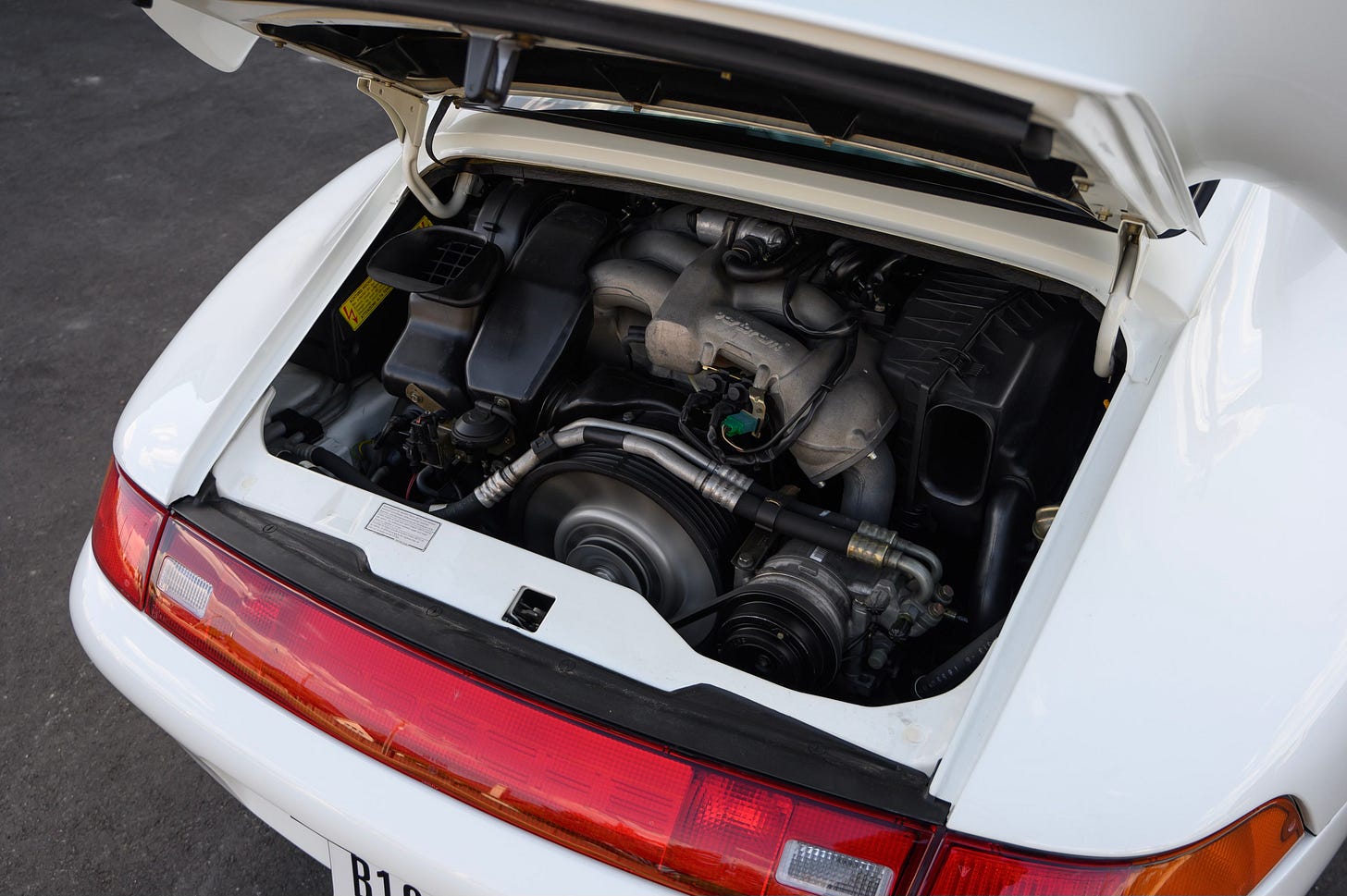
The final note I wrote down: “appreciable harmony.”
I couldn’t tell you exactly what it means. The words just rose to the surface in my brain while driving. I think it’s a feeling that everything is in balance. Every detail that makes this car special and made it ready for competition in 1995 is a detail that you can touch and feel. And they all complement one another, so that every input of the throttle, every turn of the wheel, gear change, or press of the brake pedal …feels a little bit magic.
That’s how I felt, anyway, when I jotted down the words “appreciable harmony.”






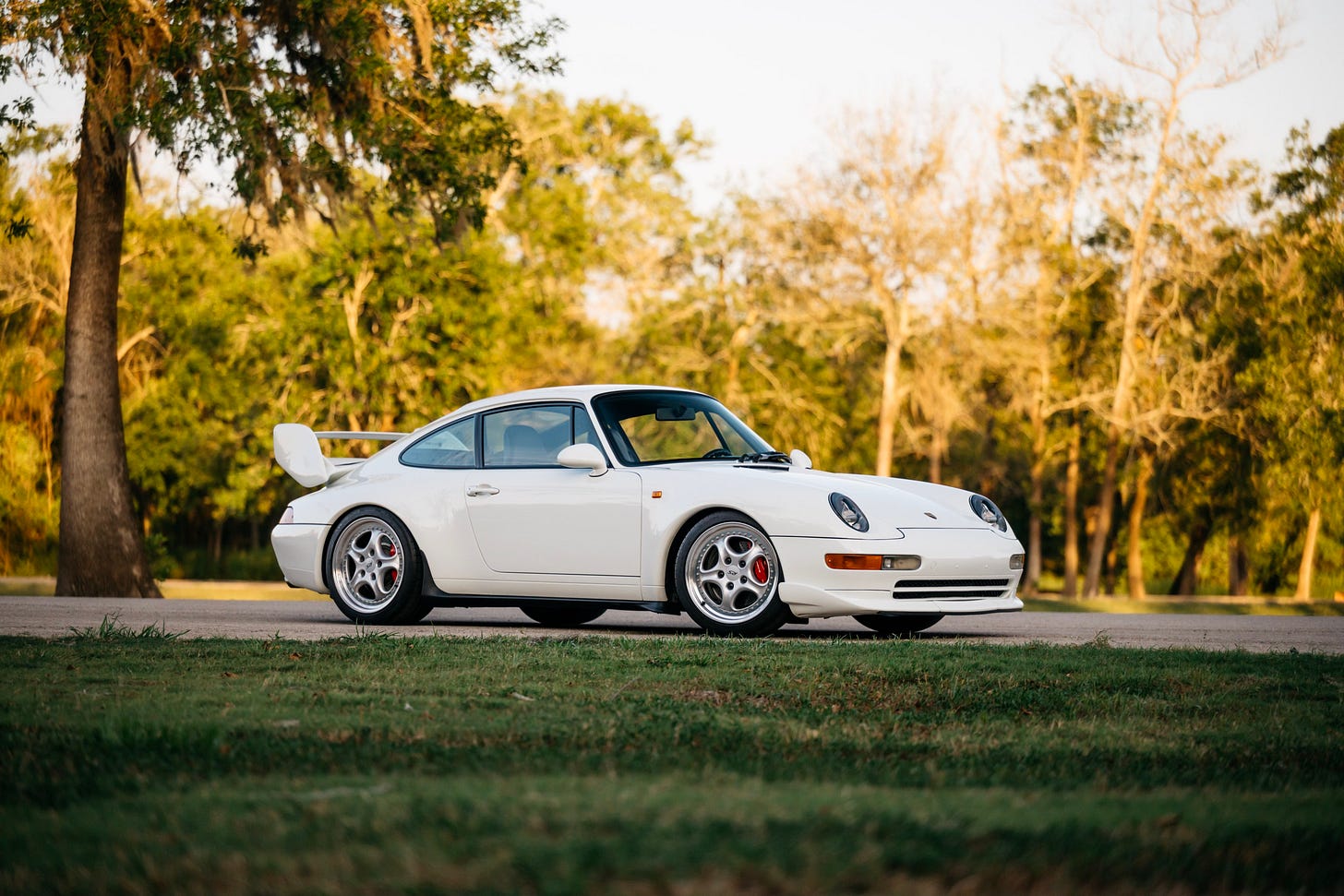

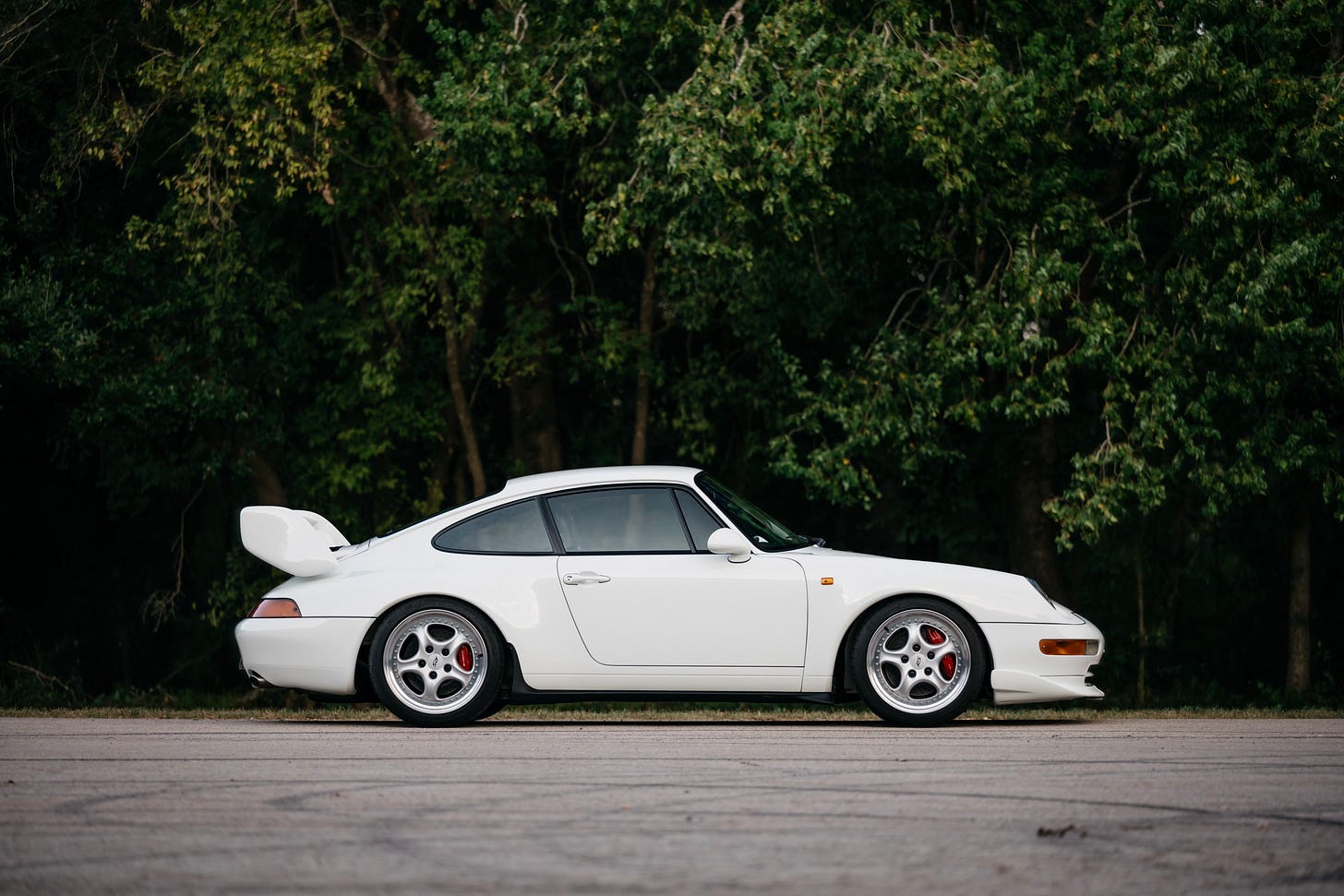
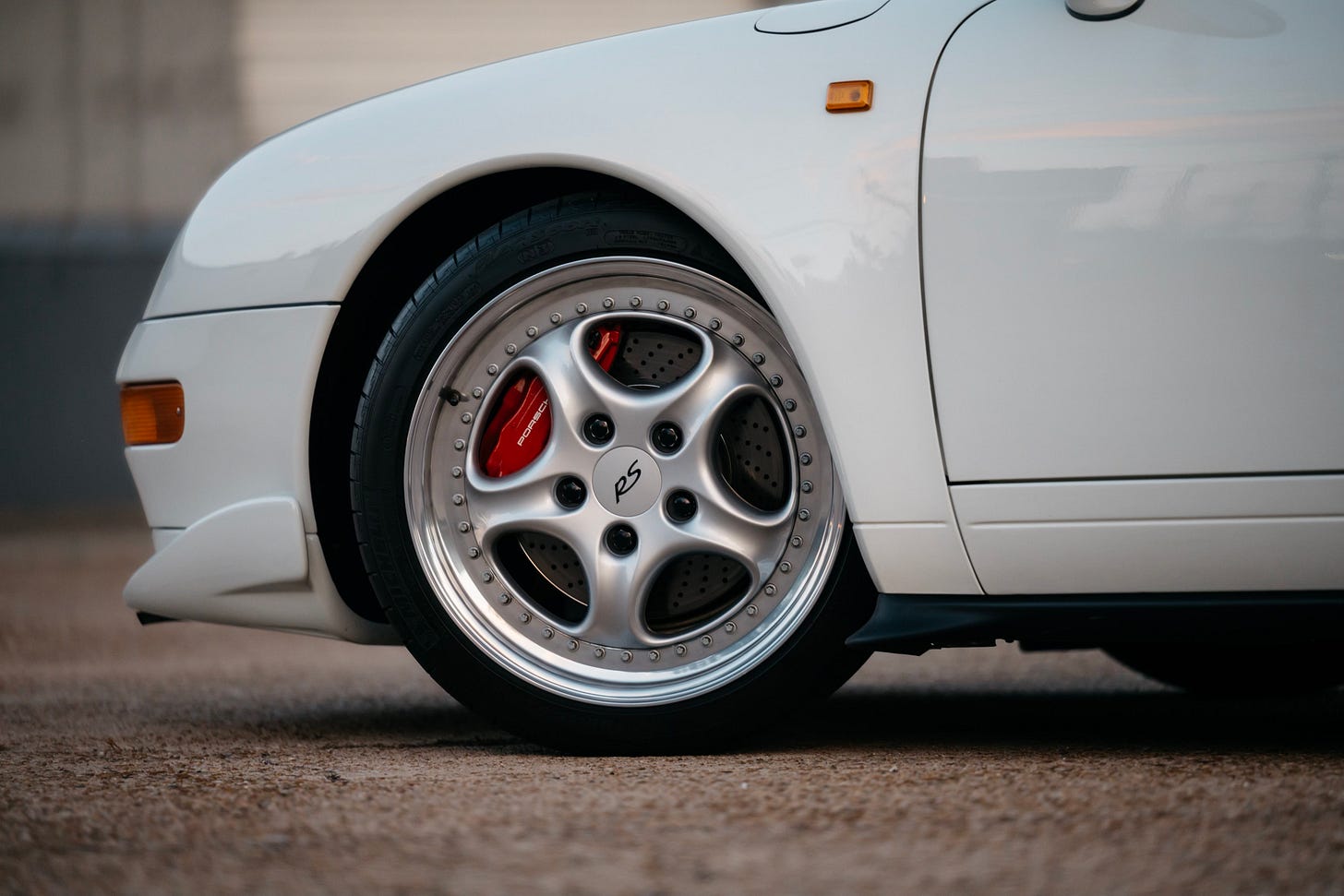
Very well written!